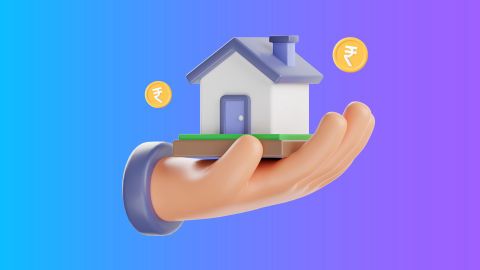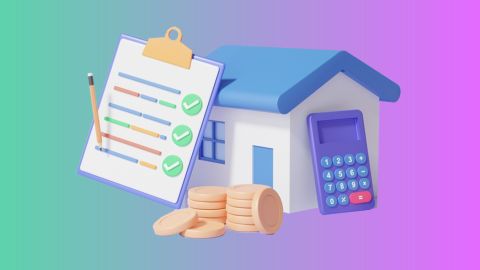Are you considering refinancing your mortgage? Understanding the mortgage refinance process is essential to make an informed decision. Mortgage refinancing allows property owners to replace their existing mortgage with a new one, typically to get better terms or lower interest rates. This process can save you money in the long run and improve your financial situation.
If you own a property and need funds, you might want to explore options like Loan Against Property offered by Bajaj Finance. This financial product can provide the liquidity you need by leveraging your property as collateral. Before diving into refinancing, let us break down the mortgage refinance process step by step.
What is mortgage refinancing?
Mortgage refinancing involves taking out a new loan to pay off your existing mortgage. The primary goal is to secure better terms, such as a lower interest rate, reduced monthly payments, or a shorter loan tenure. Refinancing can also help you switch from an adjustable-rate mortgage (ARM) to a fixed-rate mortgage, providing more stability in your payments.
When you refinance, you essentially replace your current mortgage with a new one. This new loan can be with the same lender or a different one. The process involves several steps, including applying for the new loan, getting your property appraised, and undergoing a credit check.
How does mortgage refinancing work?
The mortgage refinance process starts with evaluating your current mortgage terms and financial situation. Here is a detailed look at how it works:
- Research and compare lenders: Start by researching different lenders and comparing their refinance offers. Look at interest rates, fees, and other terms to find the best deal.
- Application: Once you have chosen a lender, you will need to complete a loan application. This will require you to provide detailed financial information, including income, assets, debts, and credit history.
- Appraisal: The lender will order an appraisal to determine the current market value of your property. This is crucial for assessing the loan-to-value ratio.
- Approval: After the appraisal, the lender will review all the information and decide whether to approve your refinance application. If approved, you will receive a loan estimate outlining the new loan terms.
- Closing: If you agree with the loan terms, the final step is closing the new loan. This involves signing the loan documents and paying any closing costs or fees associated with the refinance.
How long does the refinancing process take?
The time it takes to complete the mortgage refinance process can vary. Generally, it can take anywhere from 30 to 45 days from application to closing. Several factors influence this timeline, including the complexity of your financial situation, the lender's processing speed, and the efficiency of the appraisal process.
Refinance process timeline
- Application submission (1-3 days): Submit your loan application along with the necessary documents.
- Appraisal (1-2 weeks): The lender orders an appraisal to assess your property's value.
- Loan processing (1-2 weeks): The lender reviews your application, credit history, and appraisal report.
- Underwriting (1-2 weeks): The underwriter evaluates all the information to approve or deny the loan.
- Closing (1-3 days): If approved, you will sign the loan documents and complete the refinance.
How to cancel a refinance process application?
If you need to cancel your refinance application, follow these steps:
- Contact your lender: Inform your lender immediately about your decision to cancel the application.
- Written request: Submit a written request for cancellation to ensure that there is a formal record.
- Review fees: Be aware of any non-refundable fees that may apply.
How to cancel a refinance process transaction?
To cancel a refinance transaction, you should:
- Review the right to cancel: You have a three-day right to cancel (rescission period) after signing the loan documents.
- Notify in writing: Submit a written notice of cancellation to the lender within the rescission period.
- Return funds: If any funds were disbursed, you must return them to the lender.
Understanding the mortgage refinance process is crucial for making informed financial decisions. By refinancing your mortgage, you can secure better loan terms, lower your interest rate, or switch to a more stable loan type. If you need funds and own a property, consider Bajaj Finserv Loan Against Property as a viable option. With proper research and planning, refinancing can significantly benefit your financial health. Make sure to evaluate your options, understand the timeline, and be aware of how to cancel the process if needed.









 Food & Beverages
Food & Beverages Grocery
Grocery Fashion
Fashion Beauty & Personal Care
Beauty & Personal Care Health & Wellness
Health & Wellness Home & Kitchen
Home & Kitchen
 Wallet
Wallet
 Loan Against Shares
Loan Against Shares Loan Against Mutual Funds
Loan Against Mutual Funds Loan Against Bonds
Loan Against Bonds Loan Against Insurance Policy
Loan Against Insurance Policy ESOP Financing
ESOP Financing Easy EMI Loan
Easy EMI Loan Two-wheeler Loan
Two-wheeler Loan Loan for Lawyer
Loan for Lawyer Industrial Equipment Finance
Industrial Equipment Finance Industrial Equipment Balance Transfer
Industrial Equipment Balance Transfer Industrial Equipment Refinance
Industrial Equipment Refinance Personal Loan Branch Locator
Personal Loan Branch Locator
 Smartphones
Smartphones Air Conditioner
Air Conditioner Led TVs
Led TVs Air Coolers
Air Coolers Refrigerators
Refrigerators Washing Machines
Washing Machines Laptops
Laptops

 Trading Account
Trading Account Open Demat Account
Open Demat Account Margin Trading Financing
Margin Trading Financing Share Market
Share Market Invest in IPO
Invest in IPO All stocks
All stocks Top gainers
Top gainers Top losers
Top losers 52 week high
52 week high 52 week low
52 week low Loan against shares
Loan against shares
 Business Loan
Business Loan Secured Business Loan
Secured Business Loan Loan against property
Loan against property Loans against property balance transfer
Loans against property balance transfer Loan against shares
Loan against shares Home Loan
Home Loan Loans against mutual funds
Loans against mutual funds Loan against bonds
Loan against bonds Loan against insurance policy
Loan against insurance policy
 Term Life Insurance
Term Life Insurance ULIP Plan
ULIP Plan Savings Plan
Savings Plan Family Insurance
Family Insurance Senior Citizen Health Insurance
Senior Citizen Health Insurance Critical Illness Insurance
Critical Illness Insurance Child Health Insurance
Child Health Insurance Pregnancy and Maternity Health Insurance
Pregnancy and Maternity Health Insurance Individual Health Insurance
Individual Health Insurance Low Income Health Insurance
Low Income Health Insurance Student Health Insurance
Student Health Insurance Group Health Insurance
Group Health Insurance Retirement Plans
Retirement Plans Child Plans
Child Plans Investment Plans
Investment Plans
 Apply for Gold Loan
Apply for Gold Loan Transfer your Gold Loan with Us
Transfer your Gold Loan with Us Gold Loan Branch Locator
Gold Loan Branch Locator
 ULIP Plan
ULIP Plan Savings Plan
Savings Plan Retirement Plans
Retirement Plans Child Plans
Child Plans Free Demat Account
Free Demat Account Invest in Stocks
Invest in Stocks Invest in IPO
Invest in IPO Margin Trading Facility
Margin Trading Facility Fixed Deposit Branch Locator
Fixed Deposit Branch Locator
 Get Bajaj Prime
Get Bajaj Prime
 Bike
Bike Scooter
Scooter Electric Vehicle
Electric Vehicle Best Sellers
Best Sellers Popular Brands
Popular Brands
 Check your Credit Score
Check your Credit Score
 Engagement Zone
Engagement Zone Game Zone
Game Zone
 New Car Loan
New Car Loan Used Car Loan
Used Car Loan Loan Against Car
Loan Against Car Car Loan Balance Transfer and Top-up
Car Loan Balance Transfer and Top-up
 Mobiles and Electronics on Easy EMI
Mobiles and Electronics on Easy EMI
 Personal Loan EMI Calculator
Personal Loan EMI Calculator Personal Loan Eligibility Calculator
Personal Loan Eligibility Calculator Home Loan EMI Calculator
Home Loan EMI Calculator Home Loan Eligibility Calculator
Home Loan Eligibility Calculator Good & Service Tax (GST) Calculator
Good & Service Tax (GST) Calculator Flexi Day Wise Interest Calculator
Flexi Day Wise Interest Calculator Flexi Transaction Calculator
Flexi Transaction Calculator Secured Business Loan Eligibility Calculator
Secured Business Loan Eligibility Calculator Fixed Deposits Interest Calculator
Fixed Deposits Interest Calculator Two wheeler Loan EMI Calculator
Two wheeler Loan EMI Calculator New Car Loan EMI Calculator
New Car Loan EMI Calculator Used Car Loan EMI Calculator
Used Car Loan EMI Calculator All Calculator
All Calculator
 Hot Deals
Hot Deals Clearance Sale
Clearance Sale Kitchen Appliances
Kitchen Appliances Tyres
Tyres Camera & Accessories
Camera & Accessories Mattresses
Mattresses Furniture
Furniture Watches
Watches Music & Audio
Music & Audio Cycles
Cycles Mixer & Grinder
Mixer & Grinder Luggage & Travel
Luggage & Travel Fitness Equipment
Fitness Equipment Fans
Fans
 Personal Loan for Doctors
Personal Loan for Doctors Business loan for Doctors
Business loan for Doctors Medical Equipment Finance
Medical Equipment Finance Secured Business Loan
Secured Business Loan Loan against property
Loan against property Loan against share
Loan against share Gold Loan
Gold Loan Home Loan
Home Loan
 Smartphones
Smartphones Air Conditioners
Air Conditioners LED TVs
LED TVs Air Coolers
Air Coolers Refrigerators
Refrigerators Washing Machines
Washing Machines Laptops
Laptops Water Purifiers
Water Purifiers Tablets
Tablets Kitchen Appliances
Kitchen Appliances Mattresses
Mattresses Furniture
Furniture Music and Audio
Music and Audio Cameras & Accessories
Cameras & Accessories Cycle
Cycle Watches
Watches Tyres
Tyres Luggage & Travel
Luggage & Travel Fitness Equipment
Fitness Equipment Tractor
Tractor
 Home Loan
Home Loan Transfer your existing Home loan
Transfer your existing Home loan Loan against Property
Loan against Property Home Loan for Salaried
Home Loan for Salaried Home loan for self employed
Home loan for self employed Home Loan EMI Calculator
Home Loan EMI Calculator Home Loan eligibility calculator
Home Loan eligibility calculator Home Loan balance transfer
Home Loan balance transfer
 Easy EMI
Easy EMI Offer World
Offer World 1 EMI OFF
1 EMI OFF New Launches
New Launches Zero Down Payment
Zero Down Payment Clearance Sale
Clearance Sale Bajaj Mall Sale
Bajaj Mall Sale
 Articles
Articles
 Overdue Payments
Overdue Payments Other Payments
Other Payments
 Document Center
Document Center Bank details & Documents
Bank details & Documents Tax Invoice Certificate
Tax Invoice Certificate
 Do Not Call Service
Do Not Call Service
 Your Orders
Your Orders Hamara Mall Orders
Hamara Mall Orders

 Fixed Deposit (IFA) Partner
Fixed Deposit (IFA) Partner Loan (DSA) Partner
Loan (DSA) Partner Debt Management Partner
Debt Management Partner EMI Network Partner
EMI Network Partner Become a Merchant
Become a Merchant Partner Sign-in
Partner Sign-in
 Food & Shopping
Food & Shopping Credit Card Hub
Credit Card Hub ULIP Plans
ULIP Plans Top Gainers Stock
Top Gainers Stock Top Losers Stock
Top Losers Stock Saving Plan
Saving Plan Term Insurance
Term Insurance Easy EMI Loan
Easy EMI Loan Senior Citizen Health Insurance
Senior Citizen Health Insurance Critical Illness Insurance
Critical Illness Insurance Digi Sarkar
Digi Sarkar Faster, Easier Gold Loan
Faster, Easier Gold Loan
 Live Videos
Live Videos











